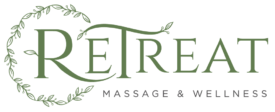‘To stop a toothache, squeeze your toe”
Do you know that the ancient tomb of Ankmahor depicted foot reflexology practices in the Sixth Dynasty of ancient Egypt? The Egyptians were not the only ones who valued reflexology. This ancient art of healing was also evidenced in China and the North American Indians.
Reflexology is derived from the word ‘reflex’ or an involuntary movement caused by a stimulus. Imagine reflexology as a mirror image. Our hands and feet are mirror images to other parts of the body. Touching and stimulating one part results in a reaction from its corresponding ‘mirror image’ part.
Zone therapy was developed around AD1500. The first book on the topic was written in the 16th century. In the early 1900s, Dr. William Fitzgerald’s systematic foot treatment became the topic of a cheeky article titled ‘If you want to cure your toothache, squeeze your toe’. The article became viral and put reflexology into the global consciousness. Foot reflexology continued to be popular into the 1930s with successes recorded by osteopaths and dentists.
The modern founder of reflexology’s revival is an American physiotherapist named Eunice Ingham. Ingham lectured on the topic throughout her career until her death in 1974. The Original Ingham Method® is taught in specialised reflexology schools today.
What heals what in foot reflexology?
Reflexology is a complementary treatment that focuses on the foot to create general wellness in the whole being. Modern reflexology functions on the premise that the foot has reflex points that when pressed, rubbed or stroke, can send the right signals to the brain to deal with any underlying condition in every other part of the body.
The best way to help you understand how reflexology works in the different parts of the body is to explain the foot reflexology chart.

Using Zone Therapy as a guide the foot can be divided into ten vertical and four horizontal zones. The horizontal zones are divided into the head, chest, abdominal cavity and pelvic area. The five vertical zones correspond to a different organ in these four main body regions. For example, if you have an earache, you rub the region below your last two toes. If you have a migraine, you rub the tips of your baby toe.
We encourage you to study the chart and to have some fun finding out how reflexology works.
What is Chi in reflexology and how does it work?
Ancient medicine believes in the body is a system of life forces that flows through different channels and zones in the body. If the ‘chi’ is blocked by an injury, mental stress or illness it cannot perform. The result is anxiety, stress, toxicity, congestion and blockage, illness, lethargy, and illness.
During reflexology, pressure applied to certain zones of the body stimulates the brain to release hormones that can promote healing. Robust energy flowing through the body repairs damaged cells, revitalises organs and restores energies to the entire body. In so doing, it returns the body and mind to its original state of energy and wellbeing.
Reflexology benefits the entire body

The healing chart of reflexology shows that the entire body will benefit from it. Here’s a simplified list of healing benefits from the reflexology chart:
- Reduce pain
- Soothe tiredness
- Relaxed tensed muscles and ligaments
- Improve digestion
- Improve sleep
- Treat diabetes
- Treat eating disorders
- Relieve headaches and migraines
- Reduce stress
- Treat anxiety
- Promote healing
- Balance energy
- Relieve stomach upsets
- Boost the immune system
- Calm the mind
- Re-energise cells
- Re-store energy level
- Heal injuries and ailments
- Improve breathing
- Improve blood circulation
- Promote a feeling of happiness
- Promote general wellness
Who needs foot reflexology?
Everyone with tired and sore feet for a start. Reflexology is also suitable for pain management for example, if you suffer from headaches, or have sustained an injury during sports or exercise. Reflexology or foot massage reaches deep into the different zones of the body making it ideal to treat mental related conditions like anxiety and stress, eating disorders, cognitive problems. It is also suited for underlying health conditions like insomnia, high blood pressure, diabetes, bowel problems, indigestion, and high cholesterol.
Reflexology is suitable for anyone who wants good health in the body, mind, and spirit. It is excellent for maintaining health and wellness in an individual.
How frequently should you get foot reflexology?
Some people swear by foot reflexology. If you are a confirmed foot massage fan, you will want to go at least once a week for a longer session of about 90 minutes. You may also want 2-hour reflexology for the best deep relaxation, pain management, and stress reliever.
Find your feet again with the healing and relaxation properties of reflexology. At the end of one session with Wellness Retreat Massage Spa, you will like a weight has been lifted off your shoulders. The pain and worry you feel would have disappeared. You feel great and ready to take on the world again. Your feet will be as light as a feather and you will think you are walking on air!
Refresh and rejuvenate your entire body with a reflexology massage treatment. Book a session at Retreat Wellness Massage and Reflexology Spa here.

